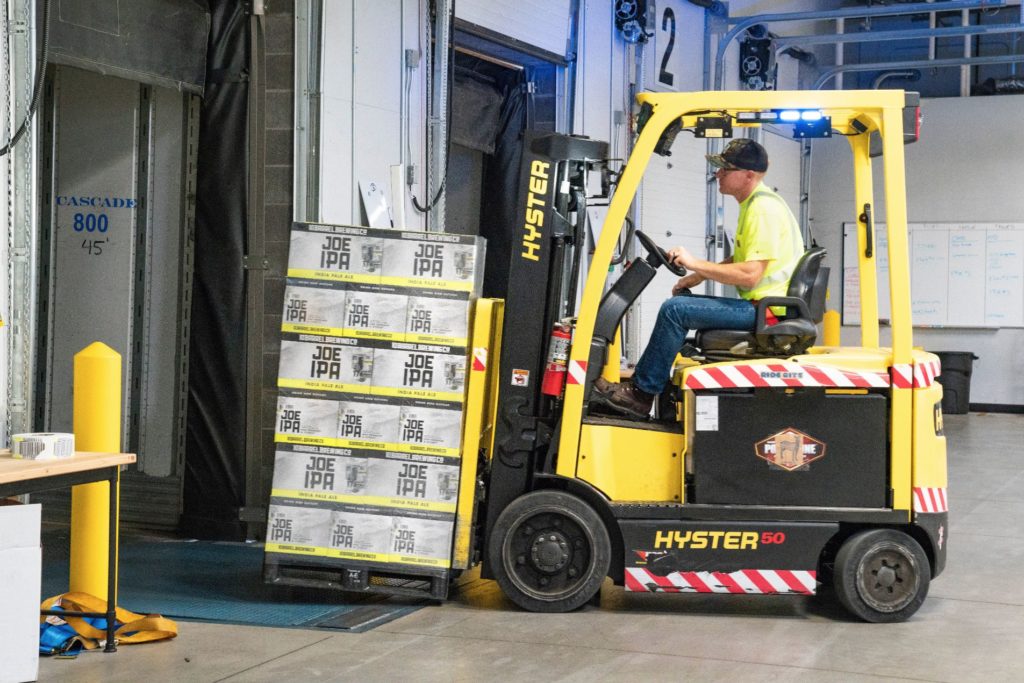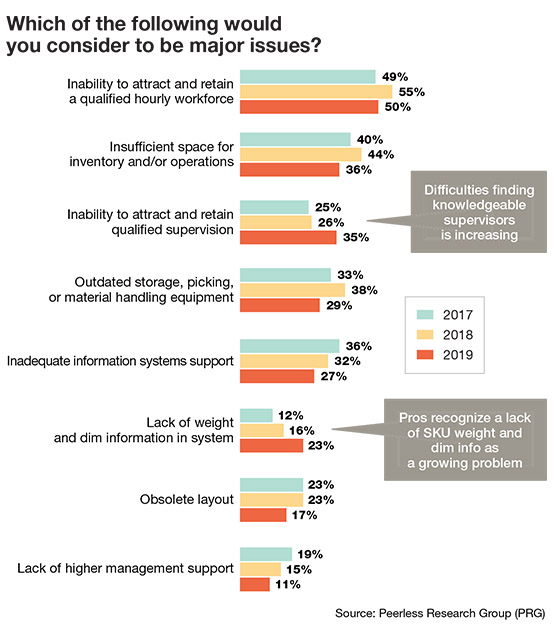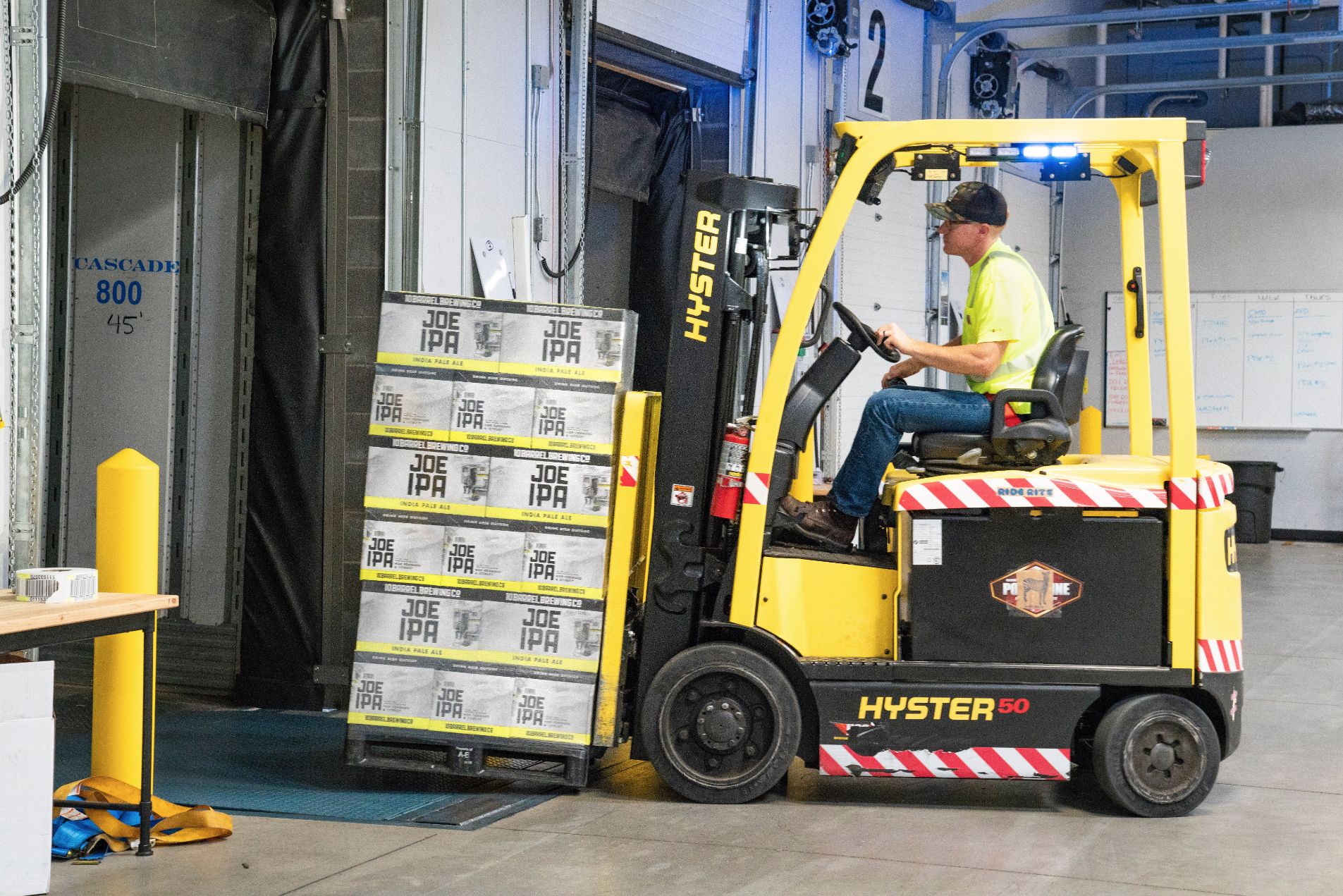
The below article goes beyond the daily tactical challenges warehouse managers face in order to provide a more comprehensive, or 360-degree, look into the underlying issues that cause those day-to-day ‘fires’ to burn and, in so doing, draw limited resources, attention, and time away from the truly important value-added work of strategic planning and goal achievement.
Multitasking or Normal Day of a Warehouse Manager
To say there are only a limited number of challenges that a site lead or a warehouse manager faces on a near daily, if not hourly, basis would be a disservice to the trade. A quick glance at a warehouse manager job description is case in point.
Not only are site leads held to account when it comes to meeting corporate performance objectives, but they are also charged with forming an effective team that they must train so that the latter can eventually take over much of the day-to-day ‘firefighting’ that occurs out on the shop floor.
The stress and strain of running an entire warehouse does not stop there, though—far from it!
Warehouse manager also need to constantly review schedules, plans, budgets, preventative maintenance initiatives, IT threats, system vulnerabilities, and audit findings, among other daily, monthly, and quarterly requirements. What’s more, they must do all of this while remaining entirely compliant within the various political and legal bodies in which they operate and that grow evermore complex the longer the supply chain becomes.
Right, Who Said Warehouse Leadership Was Exciting and Glamorous?
This is not to say that managing an entire distribution center (DC) is impossible since any new warehouse general manager or site lead is initially going to feel overwhelmed by the amount of planning and preparation that goes into learning an op from top to bottom. The argument here, however, is that there should come a point when a warehouse manager can step away to perform long-term, strategic-level planning so that his or her facility or fulfillment center does not become obsolete.
But what do you do if you’re one of the many site leads still caught up in the doldrums of shop floor firefighting while simultaneously battling cost overruns, high turnover, inflexible processes, and other barriers to growth?
First, stop looking for a quick fix—there is no software package or solution that can magically turn inexperienced shift leads into autonomous operations managers. Second, prepare to partner with HR, the training department, and, of course, your employees to see how to stymie high turnover, the need for constant onboarding and retraining, and, of course, the cost associated with such ‘rework’.
Here’s how to get started:
Background on Burnout
Before diving into why so many site leads and warehouse managers find themselves fighting to identify, source, and retain top talent on a seemingly endless cycle, let’s first look at the greater operational context in which this daily ‘drama’ is unfolding.
To be clear, and before COVID-19, there was, and still is, an increasing number of employees citing fatigue, stress, and burnout in the blue-collar industry as a cause for their leaving an otherwise fulfilling position (no pun intended). Job burnout then, and defined as a work-related stress that results in physical or emotional exhaustion, which can lead to a reduced sense of accomplishment, goes beyond a warehouse manager writing an effective job description. In other words, warehouse managers need to look at their workplace culture and climate alongside some macro-level changes in the workforce, writ large. Consider the following statistics:
- Fact: transportation and warehousing ranks in the top third across all industries for the percentage of workers feeling burned out by their workload
- Fact: adding a manufacturing component (bad pun, we know) to the supply chain bumps this ranking to number two just behind fast-food and hospitality services firms
- Fact: burnout was associated with transportation and warehousing five out of 10 times across all generations whereas the next industry claiming such fatigue (government and public administration) was cited just twice across all 10 factors.
Great, but so what? There’s plenty of software solutions and AI technology to more than bridge the gap in any hiring plans, right?
Wrong.
And here’s why.
Inside-Out
Sitting down with HR is not always at the top of every warehouse manager daily to-do list, especially when there are far more pressing matters to include, but not limited to, quality assurance reports, inventory control indicators, and a whole host of other more urgent issues.
But that’s precisely why there are so many daily production meetings, calls to HQ, and reports that need to be generated for any and all ‘misses’, or: people.
When there is high turnover and team leads find themselves seated on the wrong bus going in the wrong direction (to borrow from management guru Jim Collins here). Then comes the time to stop putting the blame on people and to start looking internally at processes and warehouse culture. In other words, and before a firm can successfully attract experienced leaders able to receive direction from the top there must be a ready training program in place to turn raw talent not only into the firefighter of today, but the future strategic leader of tomorrow.
By solving for this ‘soft’ problem, warehouse manager will naturally see costs associated with high-volume training and performance management programs decrease. Additionally, implementing SOPs and routinely updating documentation will empower employees to not only perform at their best, but to also look for any potential improvements that could save the company money, time, or in brand image by effectively reducing quality escapes.
Outside-In
Once potential new hires know they have a ‘soft’ place to land, then it becomes a matter for the warehouse manager of overcoming external barriers to success. Consider the following long-lead issues that have been plaguing warehouse managers for years:

Now, not to point too fine a point on these challenges, but if some factor has been an issue for four or more years, then why not try to solve for it internally and, in so doing, create a competitive advantage unlikely to be rivaled by your nearest competitor?
As a case in point, consider Toyota, Amazon, or FedEx who have all created their own internal training programs, camps, and centers of excellence in which to solve, once and for all, this perennial problem of attracting and retaining a qualified hourly workforce as well as top managerial talent.
Surely, the cost-benefit analysis of a one-time investment in a training ‘diet’ far outweighs the year-over-year bleed caused by reiterative onboarding, training, and retraining, which begs the question:
Why aren’t all warehouse manager getting with the program?
What You Can Do Starting Right Now
There is simple solution for warehousing and transportation staffing issues, especially as the workforce become more diverse, digitized, and incentivized by different aspects of their job. That said, there are a number of ways that warehouse manager and site leads can get out of their own way and which will see them slowly adopt the long-term gains of strategically investing in the right people versus merely trying to plug gaps in an org chart. Consider, then, the following:
- Delegate where and when you can
- Ask for help from technical leaders and top trainers
- Build a cadre of strong HRBPs willing to get out on the shop floor and to solicit inputs from long-time personnel on the floor
- Source a strong associate general manager
- Create robust training programs that offer mentor-mentee opportunities for long-term growth
- Always look to hire internally first
Get Your (Management) Team in Place
In returning to the original job description of a harried warehouse manager, it is no wonder that transportation and supply-chain firms often see a high rate of turnover from the top down. This is not to say such barriers to success are impossible to overcome, but they do require the foresight to stop playing the short game in the hopes of winning the championship title.
In conclusion, and in considering this last graphic, it only seems logical to stop believing an unlimited number of warehouse associates exist in any given geographic location. That said, and in order to remain competitive, warehouse managers and site leads need to first create a culture that is open to smart training programs that account for any number of factors to include, but not limited to, language, seasonality, and changes in hiring policies within a certain state or region.
The question then, of course, becomes, are you, warehouse manager, ready to drive this bus to success and, in so doing, get the right people in the right seats?
Beep beep!
